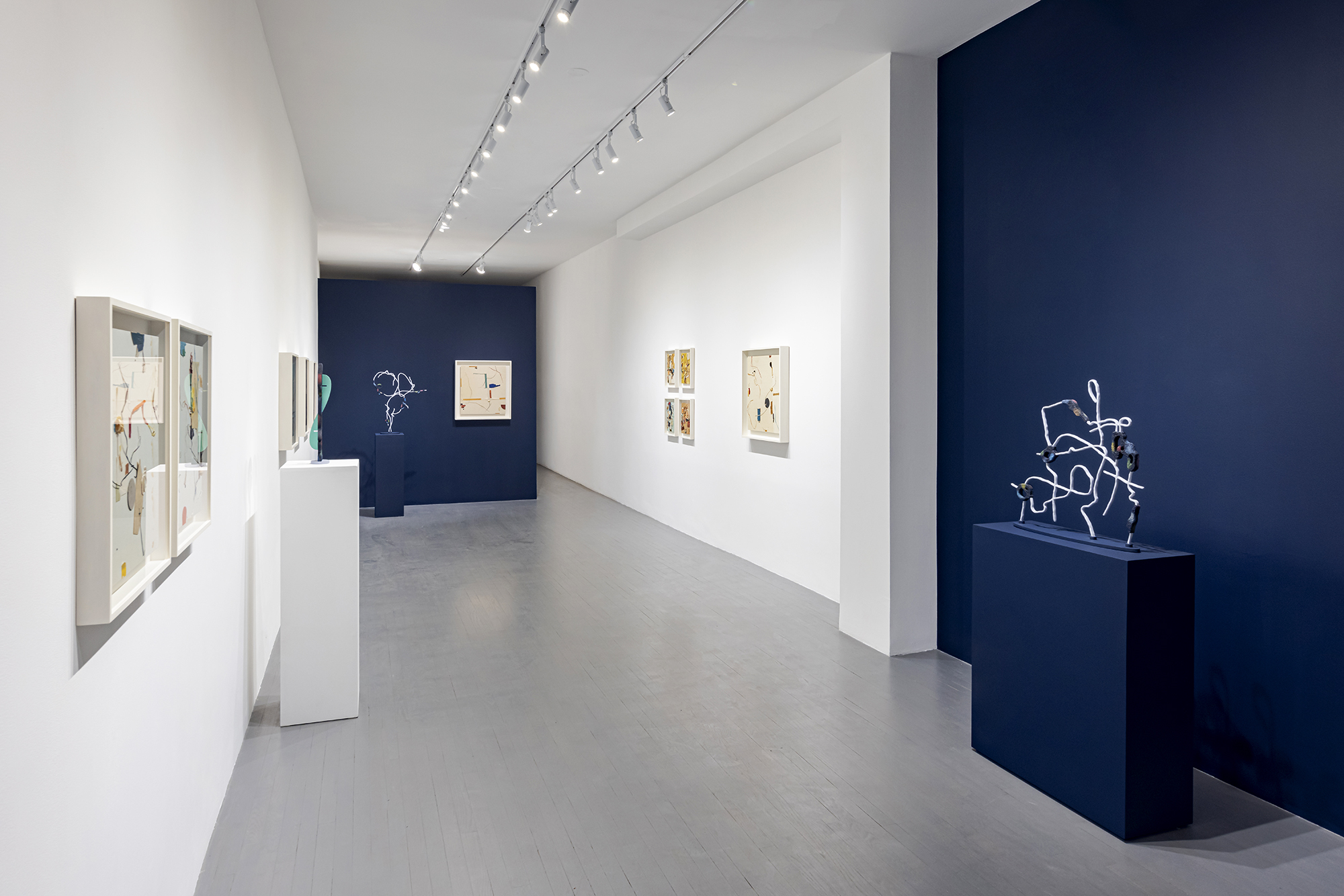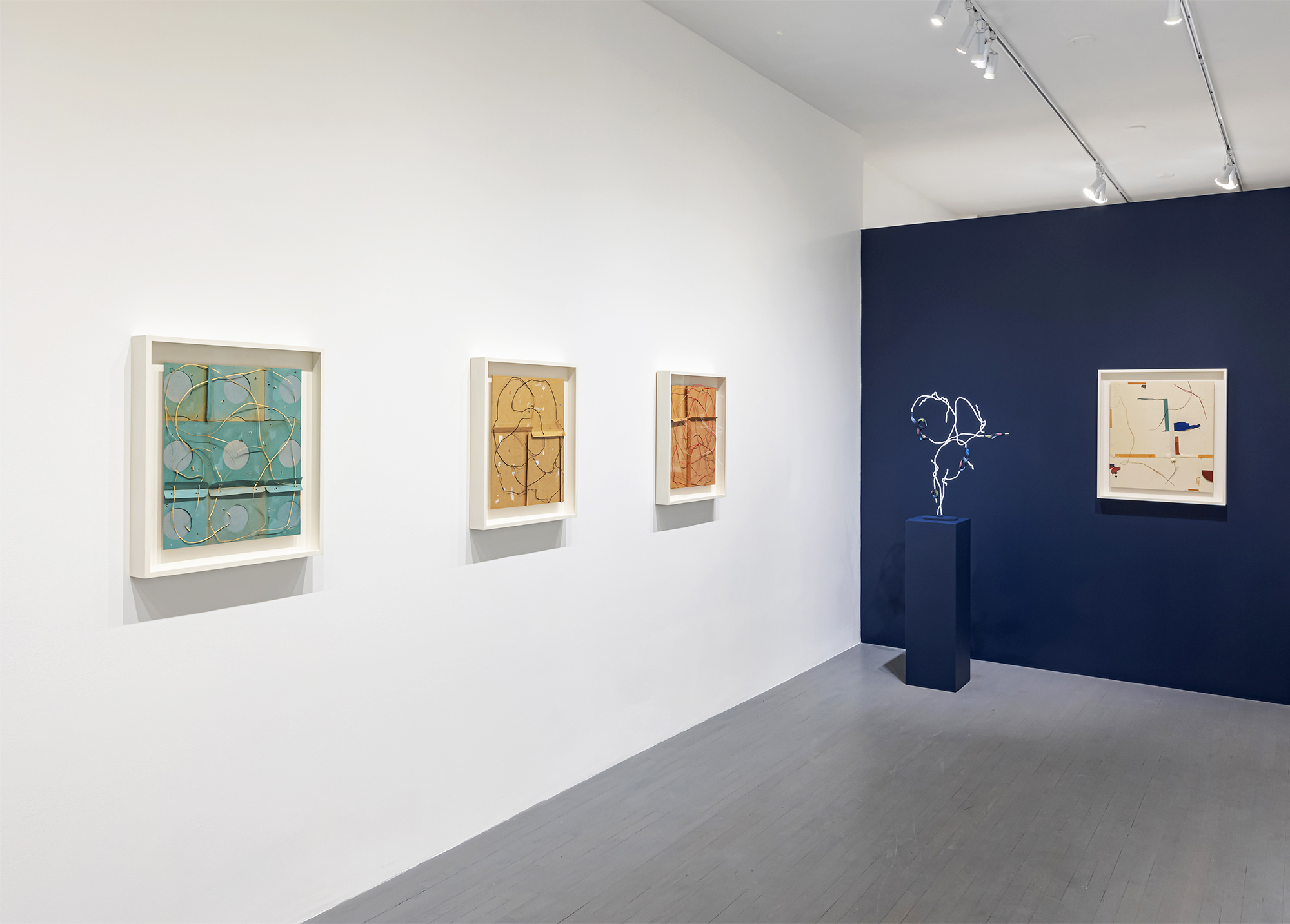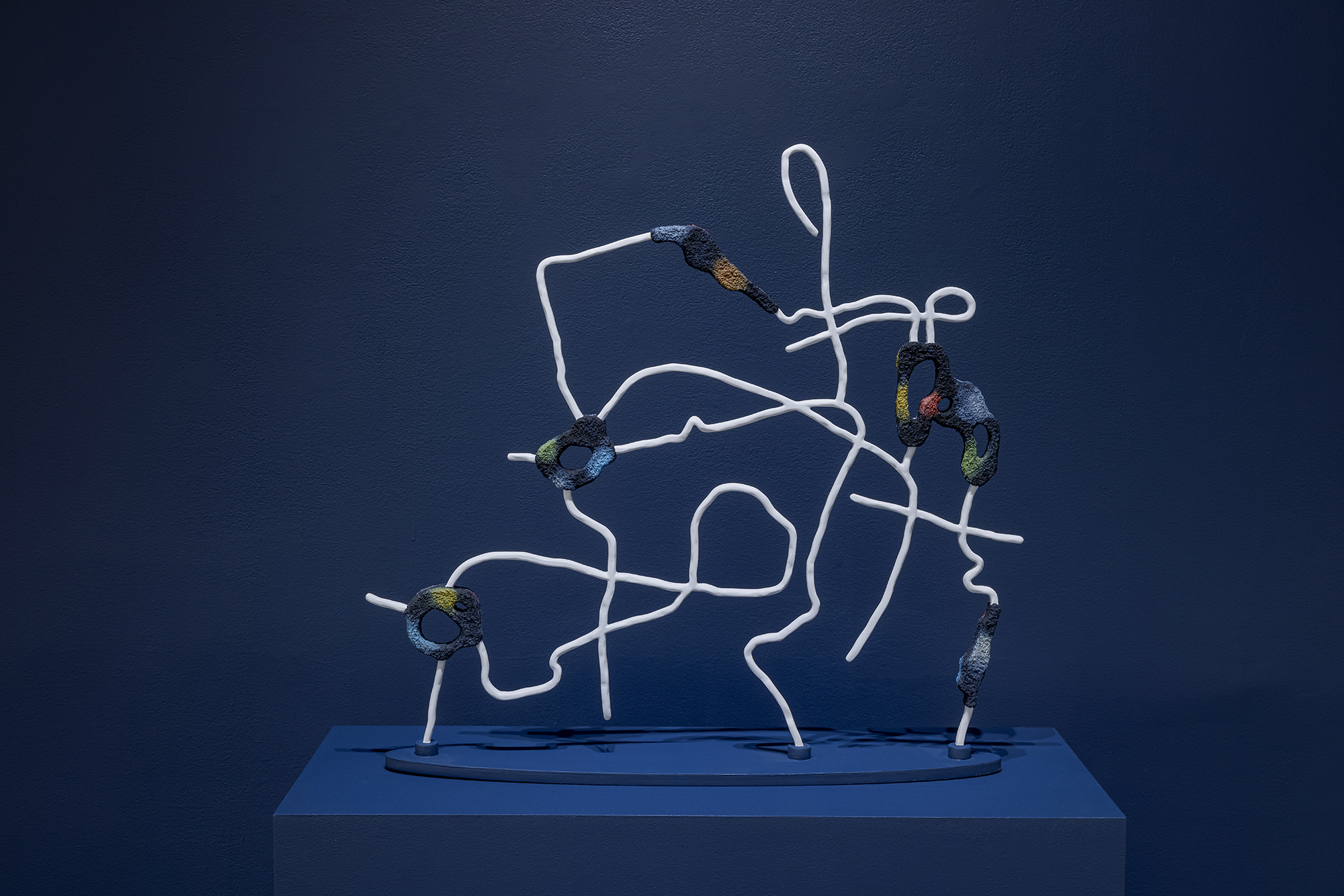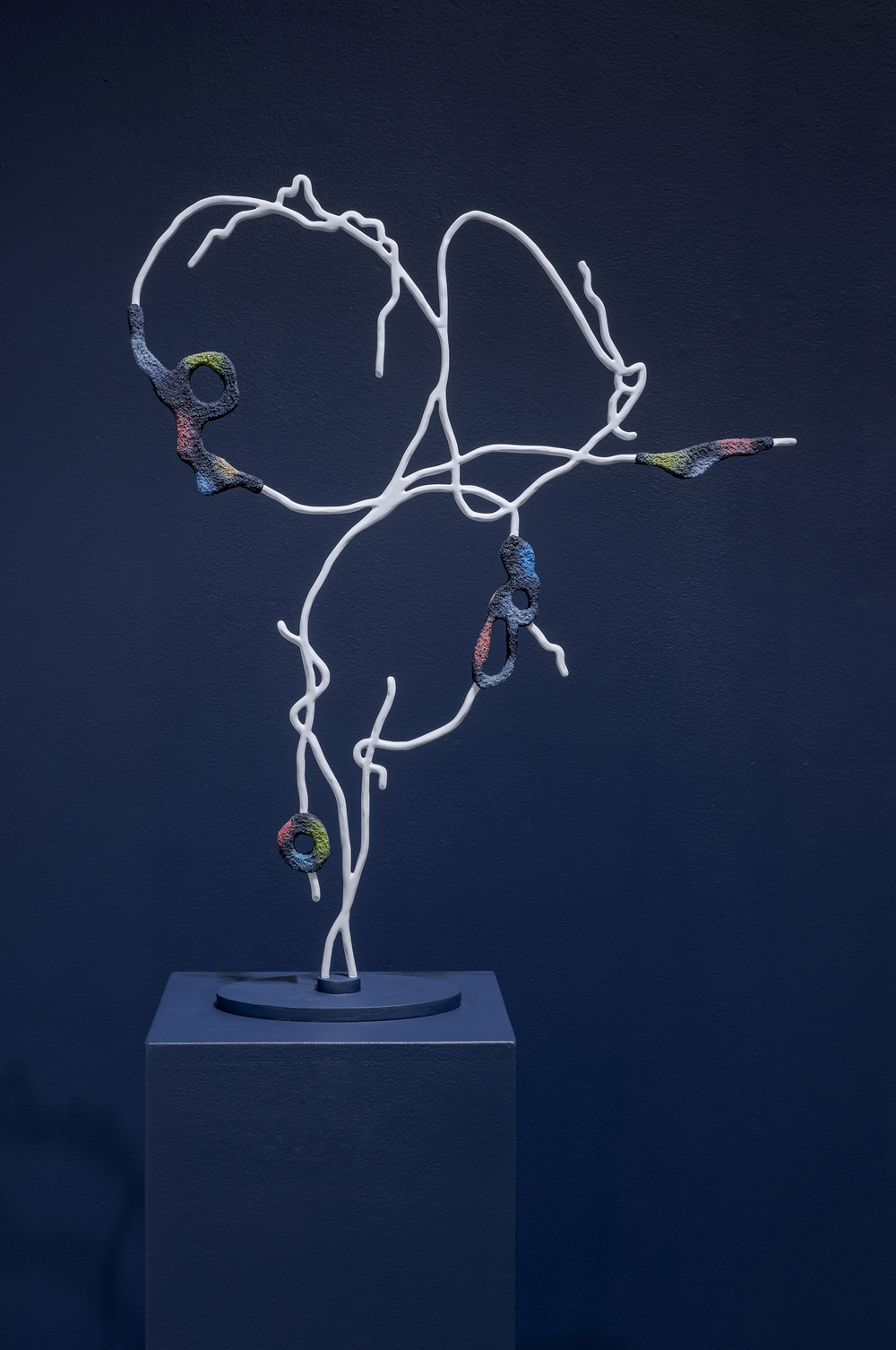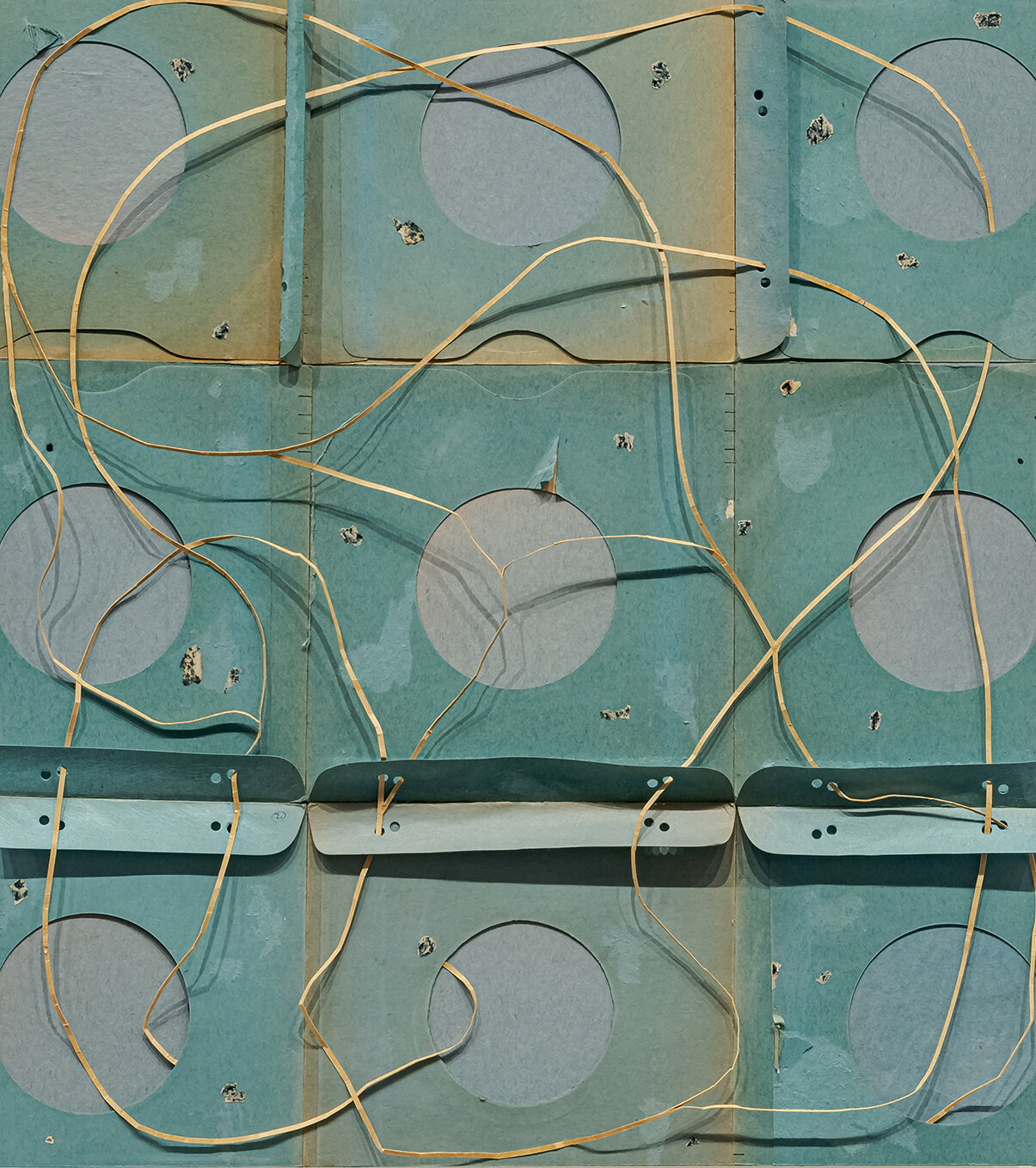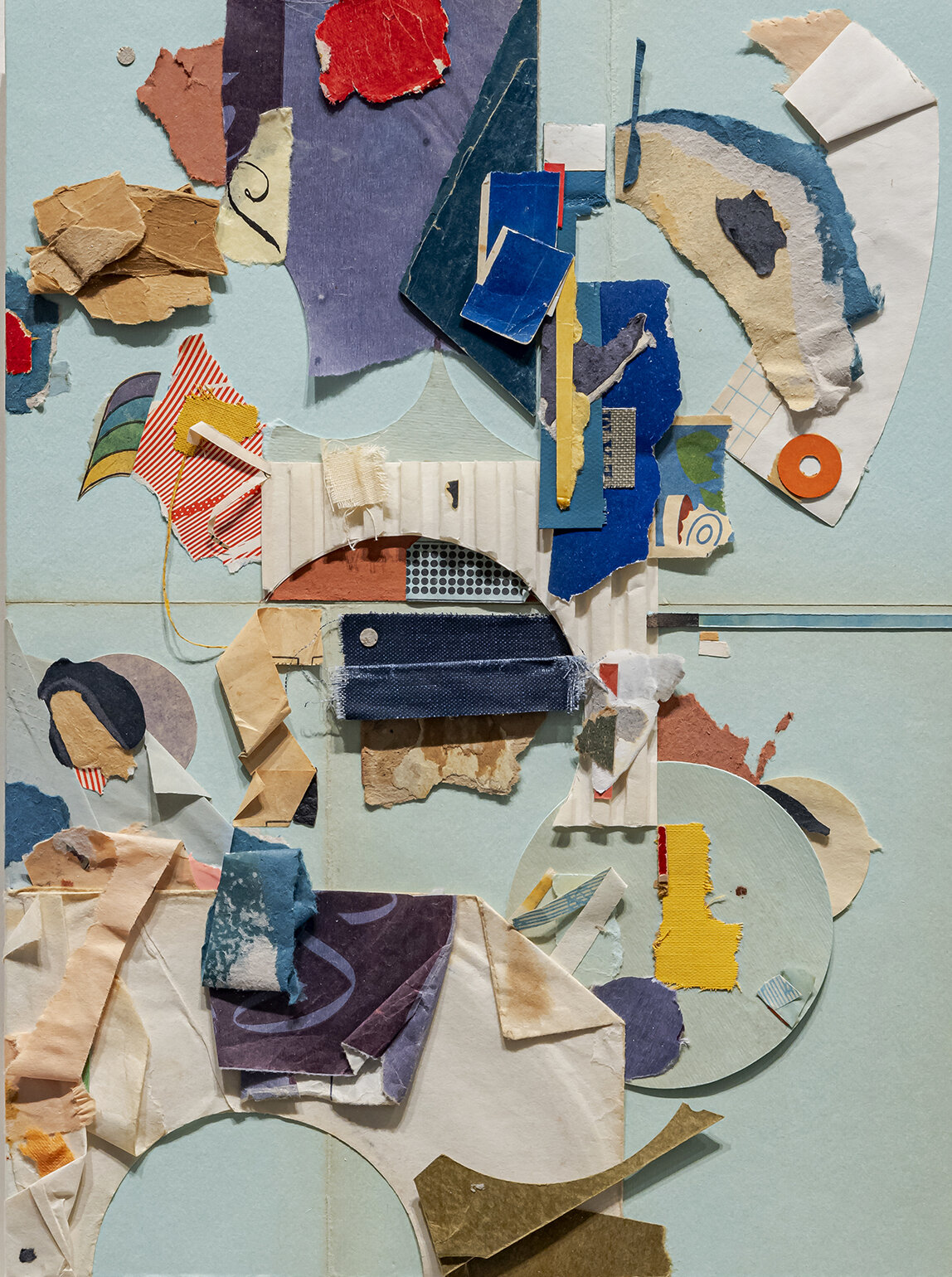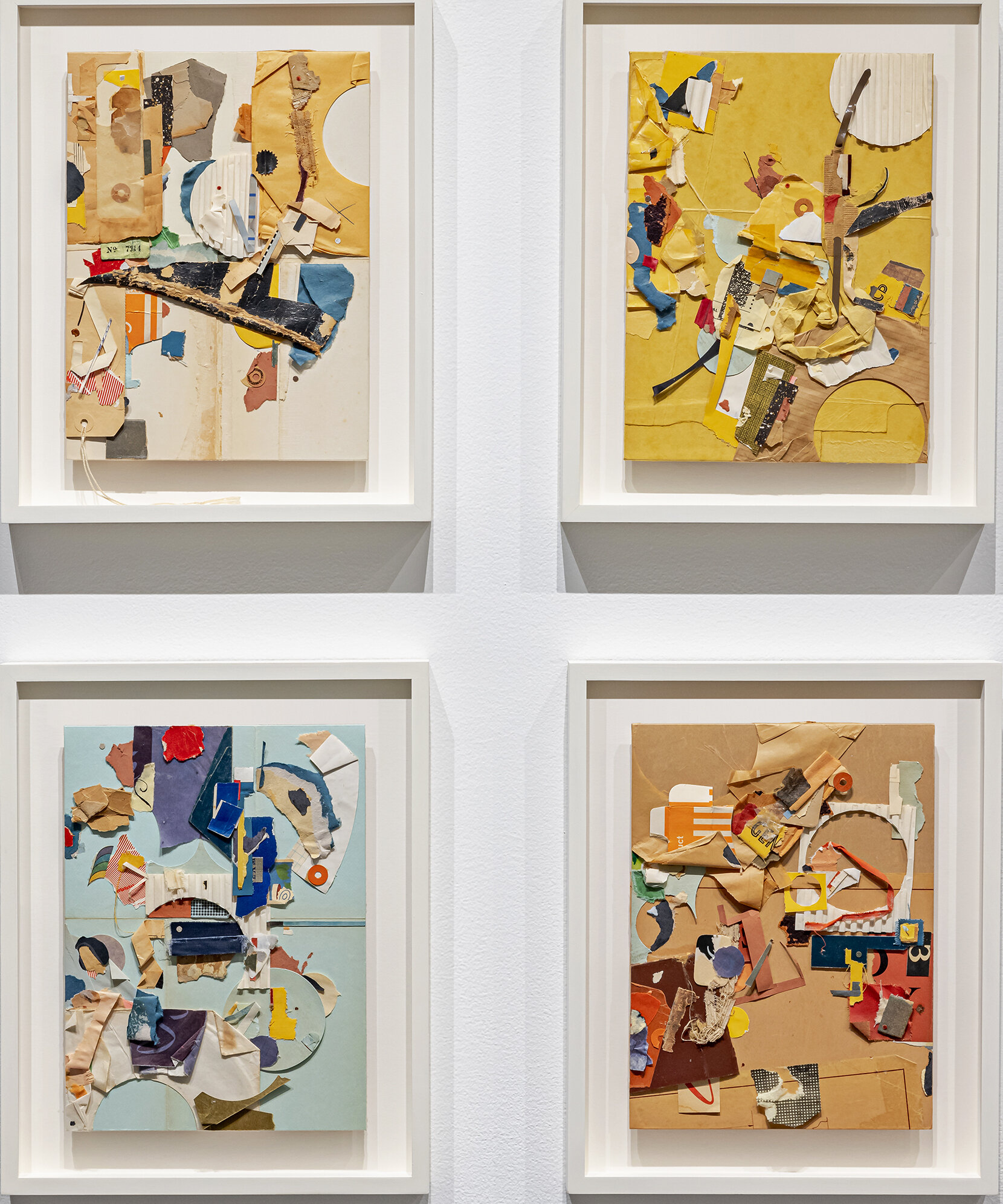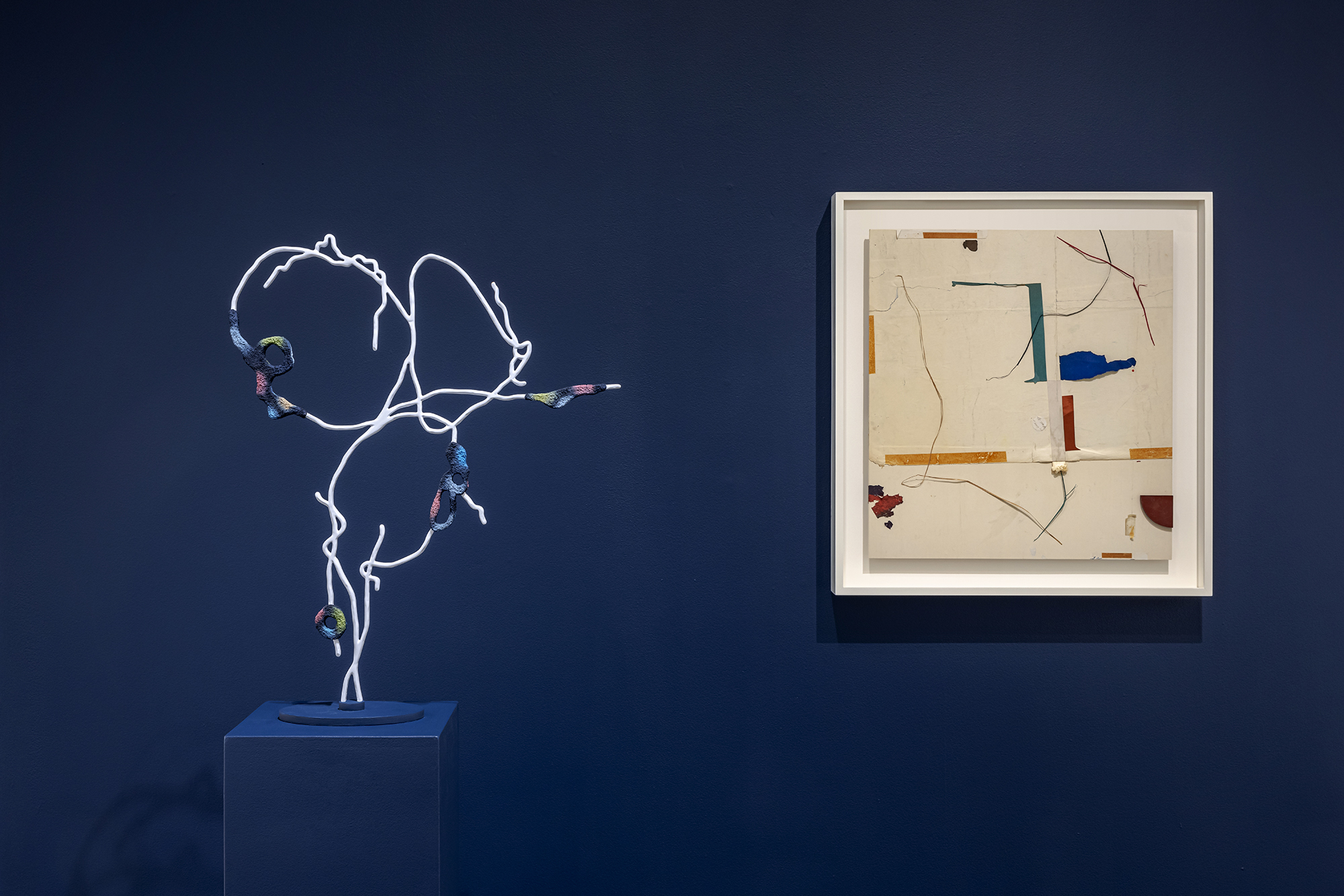“This book is about entanglements.” Thus begins the preface of Meeting the Universe Halfway, the 2007 book of theoretical physicist and feminist theorist Karen Barad. I can easily remodel their opening line to describe Jacob Robert Whibley’s current exhibition, beige mint, at Zalucky Contemporary: This exhibition is about entanglements.
Installation view of beige mint at Zalucky Contemporary
Inspired by the writings of Barad, beige mint explores the possibilities of multiple coexisting times and places, and entanglement—“to lack an independent, self-contained existence” as Barad describes it (in its most brief definition). Through a collection of sculptures and collages, beige mint tells the story of what Whibley describes as “a conspiracy between the past, present, and future.” Employing materials that have been collected over nearly twenty years, he explores the lives of these objects and reveals ghostly traces of his own past.
Even the exhibition name beige mint—an anagram for ‘time being’—is a cheeky representation of something that can exist in multiple states. The joke continues to play off of the artworks in the exhibition which (either through careful planning or happy coincidence) feature variations of beige and mint. Though the title regularly reminds us of the complex theoretical physics at work, the playfulness with which Whibley employs the title is reassurance that we need not always take ourselves so seriously, that we can enjoy ourselves even in the face of spatiotemporal exploration.
Installation view of beige mint at Zalucky Contemporary
The line sculpture, “precious meddles” (2020) was inspired by a collection of wires found by Whibley around Toronto construction sites. White lines contrast the dark navy gallery wall, forging clear paths that wander off and collide. The round organic shapes that fuse the lines together are less clearly defined against the navy background in shades of blues, yellows, and greens. Some lines split and diverge, others are nearly unbroken from start to finish. All lines connect eventually at junctions that give “precious meddles” the appearance of a warped subway map. This comparison makes for a surprisingly apt embodiment of entanglement. Multiple states of subway maps exist in imagined expansion projects that will never be and in the construction plans that have taken so long to complete they seem to have always been in construction. Transit and urban planning are worlds of colluding pasts, presents, and futures.
precious meddles, 2020, wood, sand, oil, and acrylic paint, 24” x 25” x 4.5”
The other line sculpture, “the ten of wands works best as a coaster for a mug half full” (2020) is composed of similar materials. This sculpture’s white lines intertwine around circular areas, revealing three approximate circles of negative space as satisfying to focus on as the lines themselves. A few identifiable patterns give the sculpture a near-humanoid appearance. A face-like shape appears on the top. A hand or a foot can be discerned in the line that juts out to the right and points to the adjacent artwork. But the intertwined lines don’t always form expected patterns, reminding us that this is not really a human but perhaps grouped traces of human movement.
the ten of wands works best as a coaster for a mug half full, 2020, wood, sand, oil, and acrylic paint, 29” x 23.5” x 6”
“water closes around a sinking object like an eyelid” (2020) is composed of gold strips of paper threaded over and through a mint-coloured field. Two other works in this series feature similar long, thin pieces of paper that track and tangle around the surface. With entanglements in mind, some questions arise: do these lines represent the traces of paths taken, possible paths, or desired paths? Could they represent all of these at once?
water closes around a sinking object like an eyelid, 2020, paper ephemera on panel, 24” x 22”
A series of four collages show Whibley’s collected materials densely packed together, off-shooting fissures of negative space. All four works have familial traits of circular caverns, shared materials, and hues of mint and beige. The materials used in these collages—an envelope, denim, scraps of stationary—lend the works a lived-in appearance. By grouping these materials together, Whibley has recontextualized them, linking them to the places, times, and memories of their neighbours. In this way, we see before our eyes that a single entity can exist in multiple times and spaces at once.
cities sink so oceans can rise, 2019, paper ephemera on panel, 15.5” x 12.5”
the earth has guilt, the earth has care, unquiet are its graves (top left), we will take turns with the sun (top right), cities sink so oceans can rise (bottom left), when you till a field you’ll find a lot of stones (bottom right), all 2019, paper ephemera on panel, 15.5” x 12.5”
Whibley’s exhibition offers us a glimpse at the entanglement of space, time, and human existence, but it goes so much further. It is not just a playful exploration, but a record of the human desire to understand the workings of space and time. We are usually unhappy to be the mere vessels through which time and space operate, we would rather make something of it and anchor it in digestible accounts. beige mint reconciles us to an entangled world, even when viewed from home.
Installation view of beige mint at Zalucky Contemporary
Olivia Mariko Hsuen-Ferris
Images are courtesy of Zalucky Contemporary
*Exhibition information: Jacob Robert Whibley, beige mint, November 14, 2020 – March 27, 2021, Zalucky Contemporary, 3044 Dundas St. W, Toronto. Exhibition images, text, and video can be viewed on the Zalucky Contemporary website.

